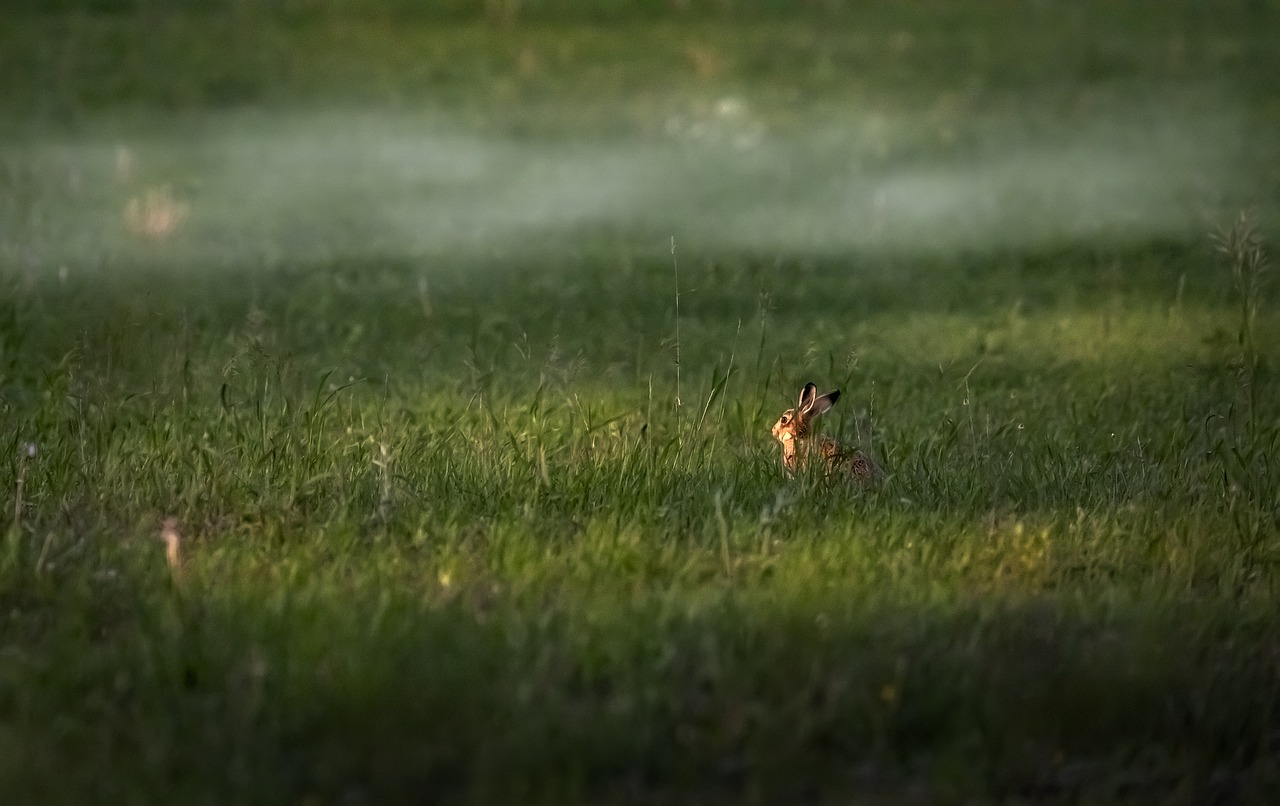The rabbit belongs to the genus Lepus within the family Leporidae, which also includes hares. These small to medium-sized mammals are known for their long ears, strong hind legs, and fluffy tails. There are numerous species of rabbits, most of which are highly adaptive and have been successful in various environments across the globe, with wild rabbits being found on every continent except Antarctica.
Physical Characteristics:
- Size: Depending on the species, rabbits can range in size from about 20 to 50 cm in length. Adult rabbits weigh between 0.5 to 2.5 kg.
- Fur: Rabbit fur varies from species to species, ranging in color from brown, gray, black, white, or a combination. They typically have a soft, dense coat that provides insulation and protection.
- Ears: Rabbits are distinguished by their long ears, which are highly sensitive to sounds and can rotate independently to detect predators. The large surface area of their ears also helps with thermoregulation, dissipating excess heat.
- Legs and Feet: Rabbits are equipped with strong, muscular hind legs adapted for running and jumping. They use this strength to quickly flee from predators, often zigzagging to evade capture.
- Tail: They have short, fluffy tails, often called “scuts,” which are white underneath and serve as a signal to alert other rabbits to danger.
Behavior:
- Social Structure: Many rabbit species are social animals, living in groups called colonies or warrens, particularly in the wild. They live in burrow systems dug into the ground, providing shelter and protection.
- Burrowing: Some species of rabbits, like the European rabbit (Oryctolagus cuniculus), are excellent burrowers, digging complex networks of tunnels. These burrows provide shelter from predators and extreme weather.
- Feeding Habits: Rabbits are herbivores, primarily feeding on grass, herbs, leafy weeds, and vegetables. They are crepuscular, meaning they are most active during dawn and dusk when feeding. Rabbits practice coprophagy, a process where they eat their feces to extract additional nutrients, specifically soft fecal pellets called cecotropes.
- Reproduction: Rabbits are known for their prolific breeding abilities. Female rabbits, called does, can give birth to multiple litters per year, with each litter containing 3 to 12 young, depending on the species. Baby rabbits, known as kits or kittens, are born blind and hairless, with their eyes opening after about 10 days.
Habitat:
Rabbits are highly adaptable and can be found in a variety of habitats, from grasslands and meadows to forests and deserts. They prefer areas with plenty of vegetation for cover and food, though many species have thrived in human-modified environments, such as farms and urban areas.
The European rabbit is the most widely known species and has been introduced to many parts of the world, including Australia and New Zealand, where it became invasive due to a lack of natural predators and the suitability of the environment for its lifestyle.
Communication:
Rabbits communicate with each other through various means:
- Body language: They use specific postures, such as thumping the ground with their hind legs to warn of predators, or adopting a relaxed position to indicate contentment.
- Vocalizations: Although generally quiet, rabbits can produce soft grunts, squeals, or growls when they are frightened or stressed.
- Scent marking: Rabbits have scent glands located under their chin and on their feet, which they use to mark territory and communicate with other rabbits.
Predators and Defense:
Rabbits are prey animals and face a variety of predators, including foxes, hawks, owls, snakes, and humans. To protect themselves, rabbits rely on their keen senses of hearing, smell, and sight. They are also fast runners, capable of reaching speeds of up to 35 miles per hour (56 km/h) in short bursts to escape danger. Their primary defense is to flee to the safety of their burrows.
In response to predators, rabbits will often freeze to blend in with their surroundings or use rapid zigzag movements to evade capture. They may also thump their hind legs on the ground to alert other rabbits of impending danger.
Conservation:
While many species of rabbits are widespread and thrive in various environments, some species are facing threats due to habitat destruction, climate change, and overhunting. The European rabbit is considered one of the most successful and adaptable mammals, but other species, such as the Volcano rabbit (Romerolagus diazi) and the Riverine rabbit (Bunolagus monticularis), are listed as endangered.
Domestic Rabbits:
Rabbits are also popular as pets, with domestic breeds having been developed from the European rabbit. Domesticated rabbits are kept for companionship, meat, fur, or wool (in the case of Angora rabbits). They require proper care, including a balanced diet of hay, fresh vegetables, and plenty of exercise to stay healthy.
Ecological Role:
Rabbits play a crucial role in many ecosystems. As herbivores, they help control vegetation, and their burrowing activities aerate the soil. They also serve as a key prey species for many predators, making them a vital part of the food chain.
Fun Facts:
- Rabbits have a nearly 360-degree field of vision, allowing them to detect predators from almost any angle.
- A group of rabbits is known as a “colony” or “herd,” and a group of baby rabbits is called a “nest” or “litter.”
- They have a special digestive system that allows them to re-digest their food to extract the maximum amount of nutrients.
In summary, rabbits are highly adaptable, social animals known for their rapid reproduction, burrowing habits, and unique behaviors. They have a significant ecological impact and have become beloved pets in many households. Whether in the wild or as domesticated companions, rabbits are fascinating creatures with remarkable survival strategies.
Views: 1356
Subscribe to the newsletter:
